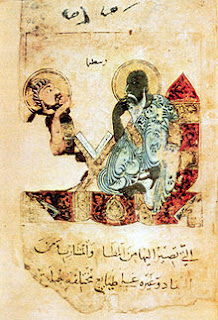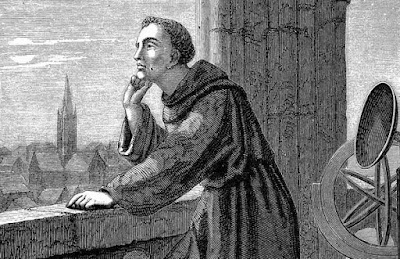Gold and silver do not oxidize like iron and copper. This "metallic immortality" surely helped to enhance the idea that they were special in a magical way. In fact, gold was considered medicine by many early authorities.
An 11th century lecturer at Salerno, Constantinus Africanus, claimed:
Gold is more temperate than the other metals. It has the property of relieving a defective stomach and comforts the fearful and those who suffer from a heart complaint. Galen confirms that it is effective against melancholy and baldness.
Obviously gold needed to be ingested for it to work. To do so required very small pieces, and the Arab physician Abulcasis explained the method for preparing gold for consumption:
Take a piece of good and pure gold; and have a plate with pure sweet water in front of you; and have a rough clean cloth of flax, one end of which you keep in your hand. The other end should stay soaking in water on the bottom of the plate. Then rub gold with the cloth, always moistening the cloth with water, and fine filings descend to the bottom of the container. Do so as long as much of that gold as you want to have been shaved. Then leave for an hour; and mix water speedily and wash three times and dry up and preserve it.
Gold-based preparations were called aurum potabile ("drinkable gold"), written about by Michael Scot, Roger Bacon and others. Making it drinkable was no small trick, but it could be made into a liquid by combining hydrochloric acid and nitric acid. This mixture was one of the only ways to dissolve gold, and inspired alchemists to believe that an actual, pure aurum potabile was possible. Paracelsus (1493 - 1541), who was adamant that one could improve upon Nature, and his contemporary Johan Isaäc Hollandus were certain that pure liquid gold could be achieved and would have unbelievable curative properties.
The consumption of gold over time, however, far from enhancing health produced "auric fever": fever, profuse sweating, excess urination, gastrointestinal problems, and kidney damage. Evidence of death by gold has been found.
In 2013, The Geological Society published a collection of essays called A History of Geology and Medicine. One article, "Pharmaceutical use of gold from antiquity to the seventeenth century," points out that there is at least one modern medicine that includes gold: Myocrisin, an injectable used for rheumatoid arthritis.
Back to the subject of liquid gold: who figured out that hydrochloric and nitric could dissolve gold? That was a 9th century writer who produced the oldest known classification system of chemical substances. His name was Jabir ibn Hayyan, and you'll learn more about him next time.







